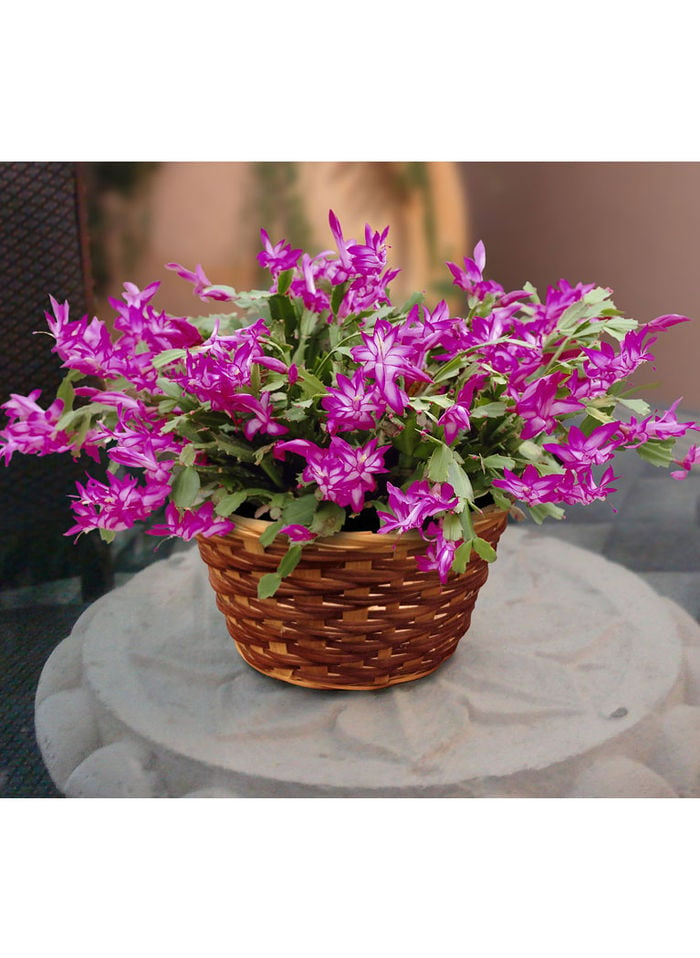 Most of the plants I’ve ever received as holiday gifts have been temporary pleasures, best enjoyed while they’re at their prettiest and then composted like cut flowers after they fade. The amount of fuss and bother required to get poinsettias to color up another year is hard to justify when you can buy them for $5 or $10. I’ll leave the day-length manipulation to the commercial greenhouses.
Most of the plants I’ve ever received as holiday gifts have been temporary pleasures, best enjoyed while they’re at their prettiest and then composted like cut flowers after they fade. The amount of fuss and bother required to get poinsettias to color up another year is hard to justify when you can buy them for $5 or $10. I’ll leave the day-length manipulation to the commercial greenhouses.
There’s one common gift, though, that makes a long-lasting houseplant and reblooms with little fuss: Christmas cactus (Schumbergera). I’ve kept a Christmas cactus for years and I’ve known people who kept them for decades.
These plants, from a small mountainous region of coastal Brazil, really are cacti – but since they evolved in a cool, moist, shaded forest, they’re very different from their prickly desert cousins.
The plant is a tangle of stems consisting of flat, green, fleshy segments that function like leaves to make food from sunlight. In the wild, these plants perch in trees or rocks, so as houseplants they need very well-drained soil. They don’t like high heat or dry air. They also don’t like blazing sun, since they evolved in the shade of trees.
In a conservatory, a Christmas cactus will do best on a lower shelf where it’s shaded by other plants. Inside a house, it’s happiest a couple of feet way from an east or south window, or behind a filtering sheer curtain, in a room that stays in the 60s.
During the winter, if conditions are right, buds appear at the edges and joints of the stem segments and open into flowers that may be red, yellow, pink, purple or white, depending on the variety.
The flowering is triggered by two factors: cooler temperatures and longer nights. A Schlumbergera needs at least 12 hours of uninterrupted darkness to flower. The “uninterrupted” part is important: A streetlight that comes on outside the window, or even the momentary blaze of a passing car’s headlights, can be enough to prevent blooming.
I’ve had good luck getting mine to flower by keeping it in a window that faces north, away from the street, in a guest room where I don’t turn on the lights in the evening. Once it blooms (which often is after Christmas), I move it to another window in a room where I can enjoy the color. In the summer, it goes out in the garden with my other houseplants, into filtered shade. I water it when the top inch or so of the soil is dry and fertilize it moderately. It’s untroubled by pests or diseases.
I’ve even rooted pieces of stem to make smaller plants to give away. How’s that for regifting?


